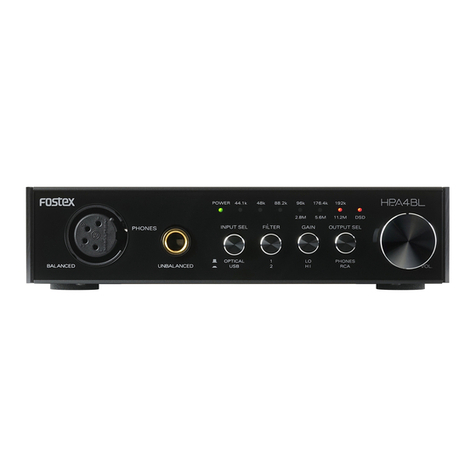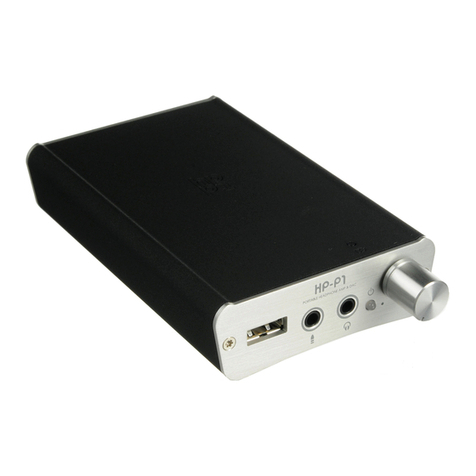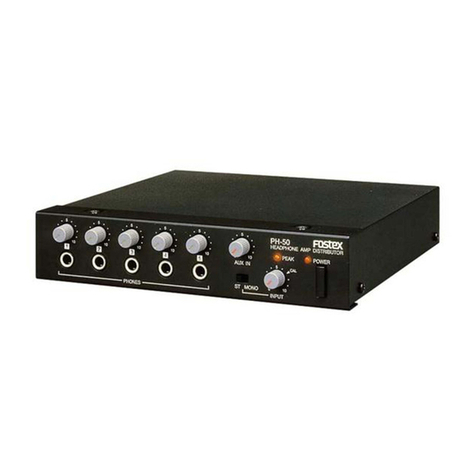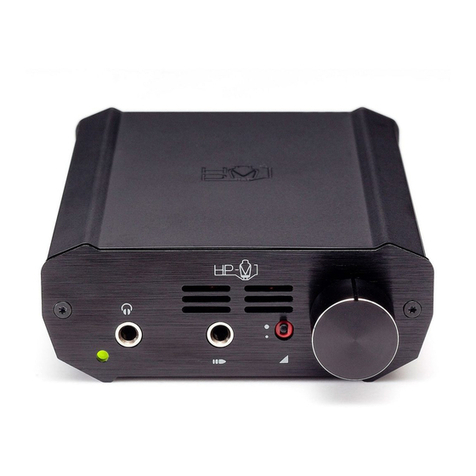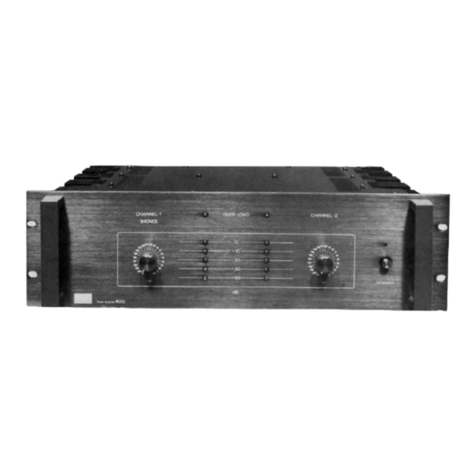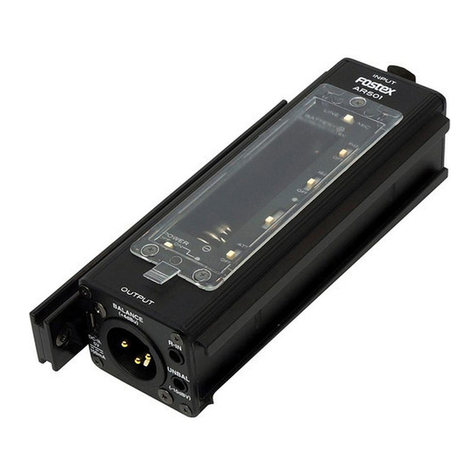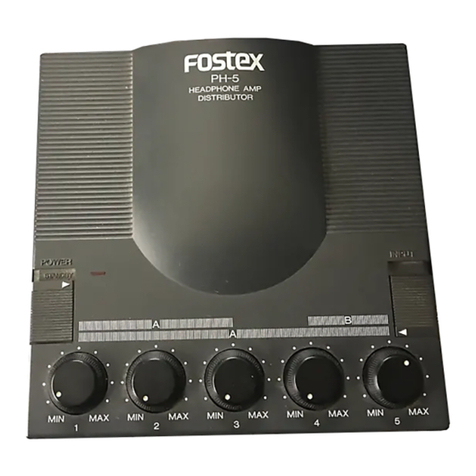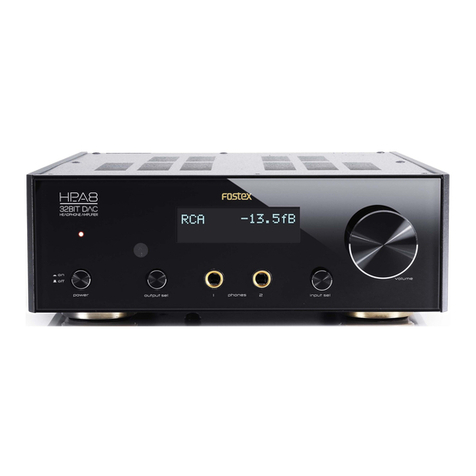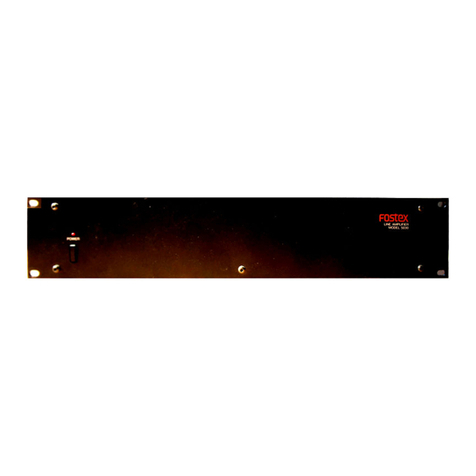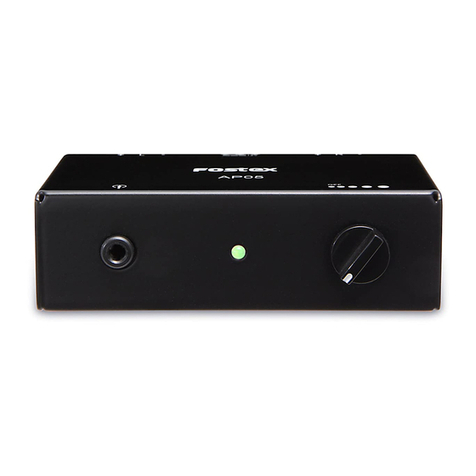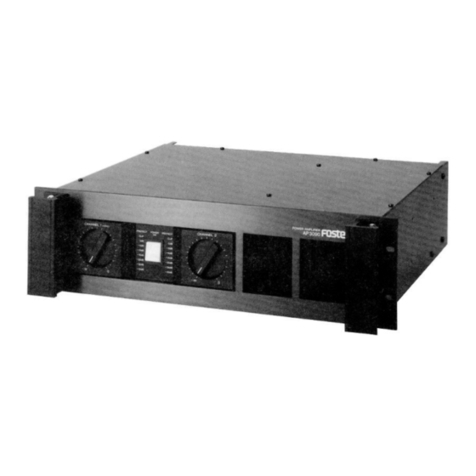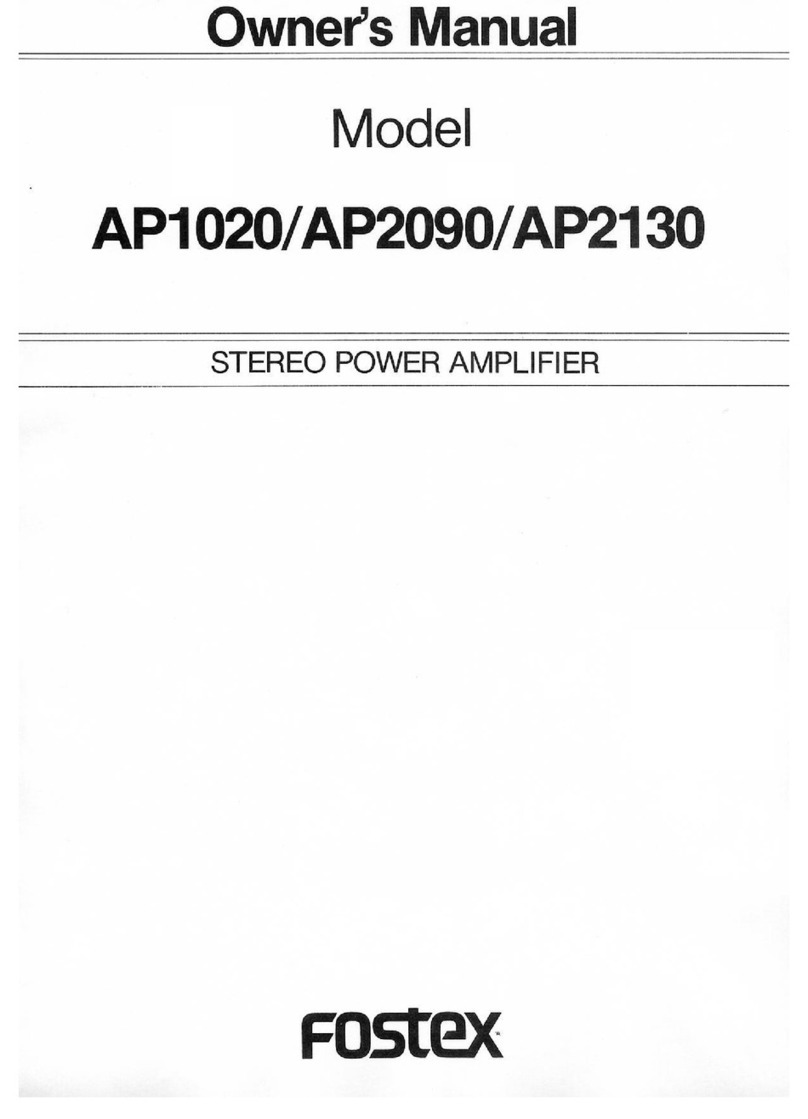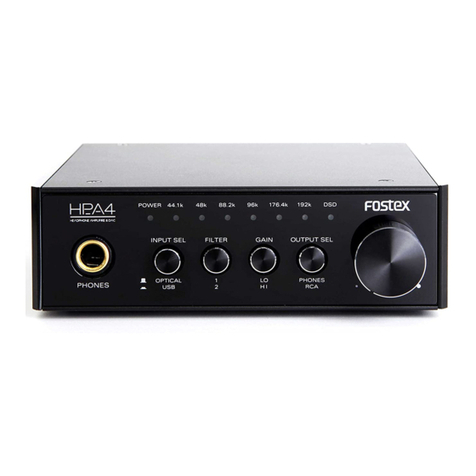E-2
SAFETY INSTRUCTIONS
1) Read these instructions.
Lisez ces instructions.
2) Keep these instructions.
Conservez ces instructions.
3) Heed all warnings.
Respectez tous les avertissements.
4) Follow all instructions.
Suivez toutes les instructions.
5) Do not use this apparatus near water.
Ne pas utiliser cet appareil près de lʼeau.
6) Clean only with dry cloth.
Nettoyer uniquement avec un chiffon sec.
7) Do not block any ventilation openings. Install in accordance with the
manufacturer’s instructions.
Ne pas bloquer les ouvertures de ventilation. Installer conformé-
ment aux instructions du fabricant.
8) Do not install near any heat sources such as radiators, heat registers,
stoves, or other apparatus (including amplifiers) that produce heat.
Ne pas installer près de sources de chaleur telles que radiateurs,
registres de chaleur, poêles ou autres appareils (y compris les am-
plificateurs) produisant de la chaleur.
9) Do not defeat the safety purpose of the polarized or grounding-type plug.
A polarized plug has two blades with one wider than the other. A ground-
ing type plug has two blades and a third grounding prong. The wide
blade or the third prong are provided for your safety. If the provided plug
does not fit into your outlet, consult an electrician for replacement of the
obsolete outlet.
Ne détruisez pas la sécurité de la terre ou polarisées - fiche. Une
fiche polarisée possède deux lames dont une est plus large que lʼ
autre. Une prise de terre possède deux lames et une broche de
terre. La lame large ou la troisième broche sont prévues pour votre
sécurité. Si la fiche fournie ne rentre pas dans votre prise, con-
sultez un électricien pour remplacer la prise obsolète.
10) Protect the power cord from being walked on or pinched particularly at
plugs, convenience receptacles, and the point where they exit from the
apparatus.
Protégez le cordon dʼalimentation dʼêtre piétiné ou pincé, particu-
lièrement au niveau des fiches, des prises, et le point où ils sortent
de lʼappareil.
11) Only use attachments/accessories specified by the manufacturer.
Nʼutilisez que des accessoires spécifiés par le fabricant.
12) Use only with the cart, stand, tripod, bracket, or table specified by the
manufacturer, or sold with the apparatus. When a cart
is used, use caution when moving the cart/apparatus
combination to avoid injury from tip-over.
Utilisez seulement avec la charrette, position,
trépied, support ou table spécifiée par le fab-
ricant, ou a vendu avec lʼappareil . Lorsquʼune
charrette est utilisée, utilise la prudence quand
déplacer la combinaison de charrette / appareil pour éviter la bles-
sure de pointe-sur.
13) Unplug this apparatus during lightning storms or when unused for long
periods of time.
Débranchez cet appareil pendant les orages ou lorsquʼil nʼest pas
utilisé pendant de longues périodes de temps.
14) Refer all servicing to qualified service personnel. Servicing is required
when the apparatus has been damaged in any way, such as power-sup-
ply cord or plug is damaged, liquid has been spilled or objects have fallen
into the apparatus, the apparatus has been exposed to rain or moisture,
does not operate normally, or has been dropped.
Confiez toute réparation à un personnel qualifié. Une réparation
est nécessaire lorsque lʼappareil a été endommagé de quelque
façon que ce cordon dʼalimentation ou la fiche est endommagé,
liquide a été renversé ou des objets sont tombés dans lʼappareil, lʼ
appareil a été exposé à la pluie ou à lʼhumidité, ne fonctionne pas
normalement, ou sʼil est tombé.
15) The apparatus shall be used in an open area.
Cet apprareil doit être utilisé dans un endroit a aire ouverte.
16) Apparatus shall not be exposed to dripping or splashing and that no ob-
jects filled with liquids, such as vases, shall be placed on appalatus.
Lʼappareil ne doit pas êclaboussures et aucun objet ne contenant
de liquide, tel quʼun vase, ne doit être placé sur lobjet.
17) Mains plug is used as disconnect device. It shall remain readily operable
and should not be obstructed during intended use. To completely discon-
nect the apparatus from supply mains, the main plug of the apparatus
shall be disconnected from the mains socket outlet completely.
La prise du secteur et utilisé pou déconnecter le système. La prise
du secteur ne doit pas étre obstruée ou doit être facilement acces-
sible pendant son utilisation. Pour être complèment déconnecté de
lʼalimentation dʼentrée, la prise doit être débranchée du secteur.
ATTENTION
RISQUE D' ÉLECTROCUTION
NES PAS OUVRIR
WARNINGS and PRECAUTIONS
• CAUTION: TO PREVENT ELECTRIC SHOCK, MATCH WIDE BLADE OF
PLUG TO WIDE SLOT, FULLY INSERT.
ATTENTION: POUR PREVENIR LES CHOCS ELECTRIQUES, APAR DE LA
FENTE LARGE, FOND.
• WARNING: To reduce the risk of fire or electric shock, do not expose this
apparatus to rain or moisture.
AVIS: Pour réduire le risque dʼincendie ou de choc électrique, ne
pas exposer cet appareil sous la pluie et lʼhumidité.
• CAUTION: Use of any controls or adjustments or performance of proce-
dures other than those herein specified may result in hazardous radiation
exposure.
ATTENTION: Lʼutilisation de tout contrôle ou de réglages ou de
procédures autres que celles indiquées ci-après peut entraîner une
exposition à des radiations dangereuses.
• WARNING: Changes or modifications to this unit not expressly approved
by the party responsible for compliance could void the user’s authority
to operate the equipment.
AVIS: Les changements ou modifications à cette unité nʼétant pas
expressément approuvé par la partie responsable de la conformité
pourrait annuler lʼautorité de lʼutilisateur de faire fonctionner lʼ
équipement.
• WARNING: Do not place the unit on top of any soft, porous, or sensitive
surfaces to avoid damaging the surface. Use a protective barrier between
the unit and surface to protect the surface.
AVIS: Ne placez pas lʼappareil au-dessus de toutes les surfaces
souples, poreux, ou sensibles pour éviter dʼendommager la sur-
face. Utilisez une barrière de protection entre lʼunité et la surface à
protéger la surface.
• WARNING: Use of this unit near fluorescent lighting may cause interfer-
ence regarding use of the remote. If the unit is displaying erratic behavior
move away from any fluorescent lighting, as it may be the cause.
AVIS: Lʼutilisation de cet appareil à proximité dʼéclairage fluo-
rescent peut provoquer des interférences sur lʼutilisation de la
télécommande. Si lʼappareil affiche un comportement erratique sʼ
éloigner de tout éclairage fluorescent, telle quʼelle peut être la
cause.
• WARNING: Do not install this equipment in a confined space such as a
book case or similar unit.
AVIS: Ne pas installer cet équipement dans un espace confiné
comme une bibliothèque ou une unité similaire.
WARNING: TO REDUCE THE RISK OF ELEC-
TRIC SHOCK, DO NOT REMOVE COVER (OR
BACK).
AVERTISSEMENT: POUR RÉDUIRE LE RISQUE
DE CHOC ÉLECTRIQUE, NE PAS ENLEVER LE
COUVERCLE (NI LE DOS).
NO USERSERVICEABLE PARTS INSIDE. REFER
SERVICING TO QUALIFIED SERVICE PERSON-
NEL.
AUCUNE PIÈCE À LʼINTÉRIEUR. ENTRETIEN DE
PERSONNELQUALIFIE.
The lightning flash with arrowhead symbol, within an equilat-
eral triangle, is intended to alert the user to the presence of
uninsulated “dangerous voltage” within the product’s enclo-
sure that may be of sufficient magnitude to constitute a risk
of electric shock to persons.
Le symbole de lʼéclair fléché dans un triangle équilaté-
ral, est destiné à alerter lʼutilisateur de la présence dʼ
une “tension dangereuse” dans le boîtier du produit qui
peuvent être des ampleur suffisante pour constituer un
risque dʼélectrocution aux personnes.
The exclamation point within an equilateral triangle is in-
tended to alert the user to the presence of important operat-
ing and maintenance (servicing) instructions in the literature
accompanying the product.
Le point dʼexclamation dans un triangle attire lʼatten-
tion de lʼutilisateur sur la présente dʼune importante
littérature concernant le fonctionnement et lʼentretien
(les réparations) de lʼappareil dans les manuels fournis.
CAUTION
RISK OF ELECTRIC SHOCK
DO NOT OPEN
